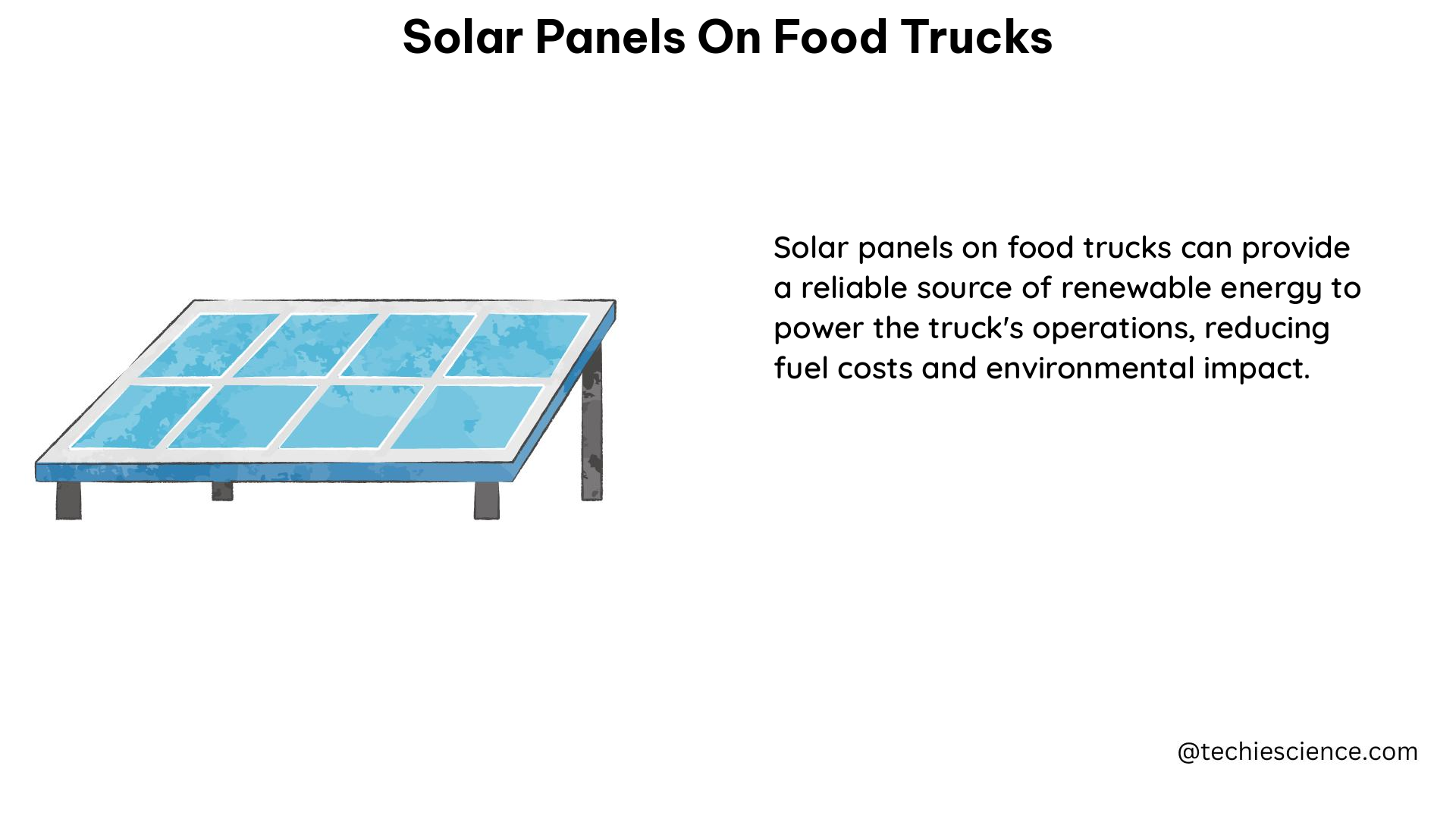Harnessing the power of the sun, food truck owners can reduce their reliance on fossil fuels, lower their carbon footprint, and enjoy a sustainable and cost-effective energy solution. This comprehensive guide delves into the technical details, design considerations, and practical implementation of solar panels on food trucks, empowering you to make informed decisions and maximize the benefits of this eco-friendly technology.
Determining the Optimal Solar Panel Configuration for Your Food Truck
The number of solar panels required for a food truck depends on several crucial factors, including the truck’s total wattage requirement, the number of operating hours, the location’s sunlight availability, and the power output of individual solar panels.
Calculating the Wattage Requirement
To determine the optimal solar panel configuration, you must first calculate the total wattage requirement of your food truck. This includes the power consumption of all electrical appliances, lighting, and any other equipment used during operation. A comprehensive energy audit can help you accurately assess your power needs.
For example, let’s consider a food truck with a total wattage requirement of 5,000 watts, operating for 6 hours per day.
Estimating Sunlight Availability
The next step is to evaluate the sunlight availability at your food truck’s location. This can vary depending on the geographic region, weather patterns, and the truck’s positioning. As a general guideline, assume an average of 6 hours of direct sunlight per day.
Selecting the Right Solar Panels
The type and size of solar panels you choose can significantly impact the number of panels required. Rigid solar panels are typically more efficient, with higher power output per panel, while flexible solar panels are designed for curved surfaces commonly found on food trucks and RVs.
For our example, let’s assume each solar panel can generate 400 watts per hour. Based on the 5,000-watt requirement and 6 hours of daily sunlight, the calculation would be:
Total Wattage Requirement: 5,000 watts
Sunlight Hours per Day: 6 hours
Watts per Panel per Hour: 400 watts
Number of Panels Needed = (Total Wattage Requirement) / (Sunlight Hours per Day x Watts per Panel per Hour)
Number of Panels Needed = 5,000 watts / (6 hours x 400 watts/hour) = 13 solar panels
In this scenario, 13 solar panels would be required to meet the food truck’s energy needs.
Designing the Solar Panel System

The solar panel system for a food truck typically consists of several key components, each playing a crucial role in the efficient generation, storage, and utilization of solar power.
Solar Panels
The solar panels are the primary energy-generating components of the system. They convert sunlight into electrical current, which is then used to power the food truck’s appliances and equipment.
Charge Controller
The charge controller regulates the flow of electricity from the solar panels to the battery bank, ensuring that the batteries are charged efficiently and preventing overcharging or damage.
Battery Bank
The battery bank stores the energy generated by the solar panels, allowing the food truck to operate during periods of low or no sunlight.
Inverter
The inverter converts the DC power stored in the battery bank into AC power, which can be used to power the food truck’s electrical appliances and equipment.
Wiring and Mounting Hardware
Proper wiring and mounting hardware are essential for the safe and secure installation of the solar panel system, ensuring optimal performance and longevity.
Financing and Incentives for Solar-Powered Food Trucks
The initial cost of a solar panel system for a food truck can be a significant investment, but there are various financing options and government incentives available to help offset the expenses.
Financing Options
Many solar panel manufacturers and installers offer low-to-no-interest financing plans, making it easier for food truck owners to invest in this sustainable technology.
Government Incentives
Depending on your location, there may be federal, state, or local government programs that provide tax credits, rebates, or other financial incentives for businesses that adopt solar power.
Marketing and Customer Engagement
In addition to the environmental and financial benefits, solar panels on food trucks can also serve as a powerful marketing tool, attracting customers who value sustainable practices and eco-friendly businesses.
Branding and Visibility
Prominently displaying the solar panels on your food truck can showcase your commitment to sustainability and differentiate your business from competitors.
Customer Engagement
Engaging with customers and educating them about the benefits of solar-powered food trucks can foster a sense of community and loyalty, further enhancing your brand’s reputation.
By following this comprehensive guide, food truck owners can confidently navigate the world of solar panel integration, making informed decisions that lead to a more sustainable, cost-effective, and customer-engaging future.
References:
- Can You Use Solar Panels on a Food Truck? [Expert’s Guide]
- Solar Panels for Food Truck – Nature’s Generator
- Maximizing Profits with a Battery-Powered Food Truck – Joule Case

The lambdageeks.com Core SME Team is a group of experienced subject matter experts from diverse scientific and technical fields including Physics, Chemistry, Technology,Electronics & Electrical Engineering, Automotive, Mechanical Engineering. Our team collaborates to create high-quality, well-researched articles on a wide range of science and technology topics for the lambdageeks.com website.
All Our Senior SME are having more than 7 Years of experience in the respective fields . They are either Working Industry Professionals or assocaited With different Universities. Refer Our Authors Page to get to know About our Core SMEs.